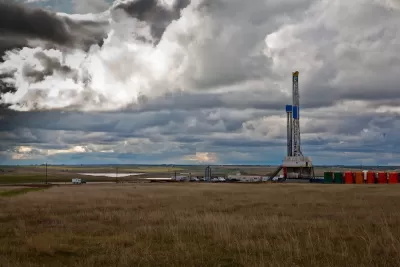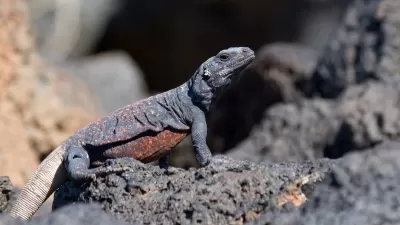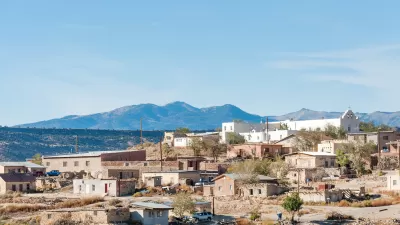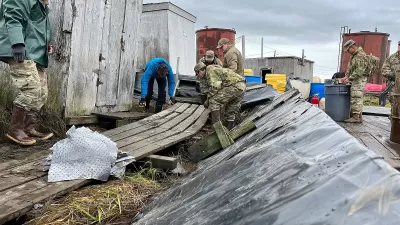A recent investigation reveals that profits from oil, grazing, and other uses on state-managed tribal lands are funding off-reservation public institutions.

Over 2 million surface and subsurface acres of land on federally recognized Indian reservations are being leased for oil and gas extraction, grazing, timber, and other uses whose profits contribute to state governments, according to an investigation by High Country News and Grist.
Anna V. Smith and Maria Parazo Rose describe the results of the investigation, noting that “Indigenous lands and resources bankroll public institutions, often at the expense of tribal citizens, Indigenous land management practices, and tribal sovereignty and self-determination.”
According to the analysis, the state trust lands in question are spread over 79 reservations in 15 states. “In at least four states, five tribal nations are themselves paying to lease land inside their own reservations — almost 58,000 collective acres.”
The authors add that some states have completed or are in the process of returning land to Indigenous control through various means. “At the forefront are Washington, which is currently implementing legislation to return lands, and North Dakota, which is moving new legislation through Congress for the same purpose. But because of the lands’ value and the states’ financial obligations, it’s difficult to transfer complete jurisdiction back to Indigenous nations.”
FULL STORY: 5 takeaways from our investigation into state trust lands on reservations

Trump Administration Could Effectively End Housing Voucher Program
Federal officials are eyeing major cuts to the Section 8 program that helps millions of low-income households pay rent.

Planetizen Federal Action Tracker
A weekly monitor of how Trump’s orders and actions are impacting planners and planning in America.

Ken Jennings Launches Transit Web Series
The Jeopardy champ wants you to ride public transit.

Crime Continues to Drop on Philly, San Francisco Transit Systems
SEPTA and BART both saw significant declines in violent crime in the first quarter of 2025.

How South LA Green Spaces Power Community Health and Hope
Green spaces like South L.A. Wetlands Park are helping South Los Angeles residents promote healthy lifestyles, build community, and advocate for improvements that reflect local needs in historically underserved neighborhoods.

Sacramento Plans ‘Quick-Build’ Road Safety Projects
The city wants to accelerate small-scale safety improvements that use low-cost equipment to make an impact at dangerous intersections.
Urban Design for Planners 1: Software Tools
This six-course series explores essential urban design concepts using open source software and equips planners with the tools they need to participate fully in the urban design process.
Planning for Universal Design
Learn the tools for implementing Universal Design in planning regulations.
Heyer Gruel & Associates PA
Ada County Highway District
Institute for Housing and Urban Development Studies (IHS)
City of Grandview
Harvard GSD Executive Education
Toledo-Lucas County Plan Commissions
Salt Lake City
NYU Wagner Graduate School of Public Service





























